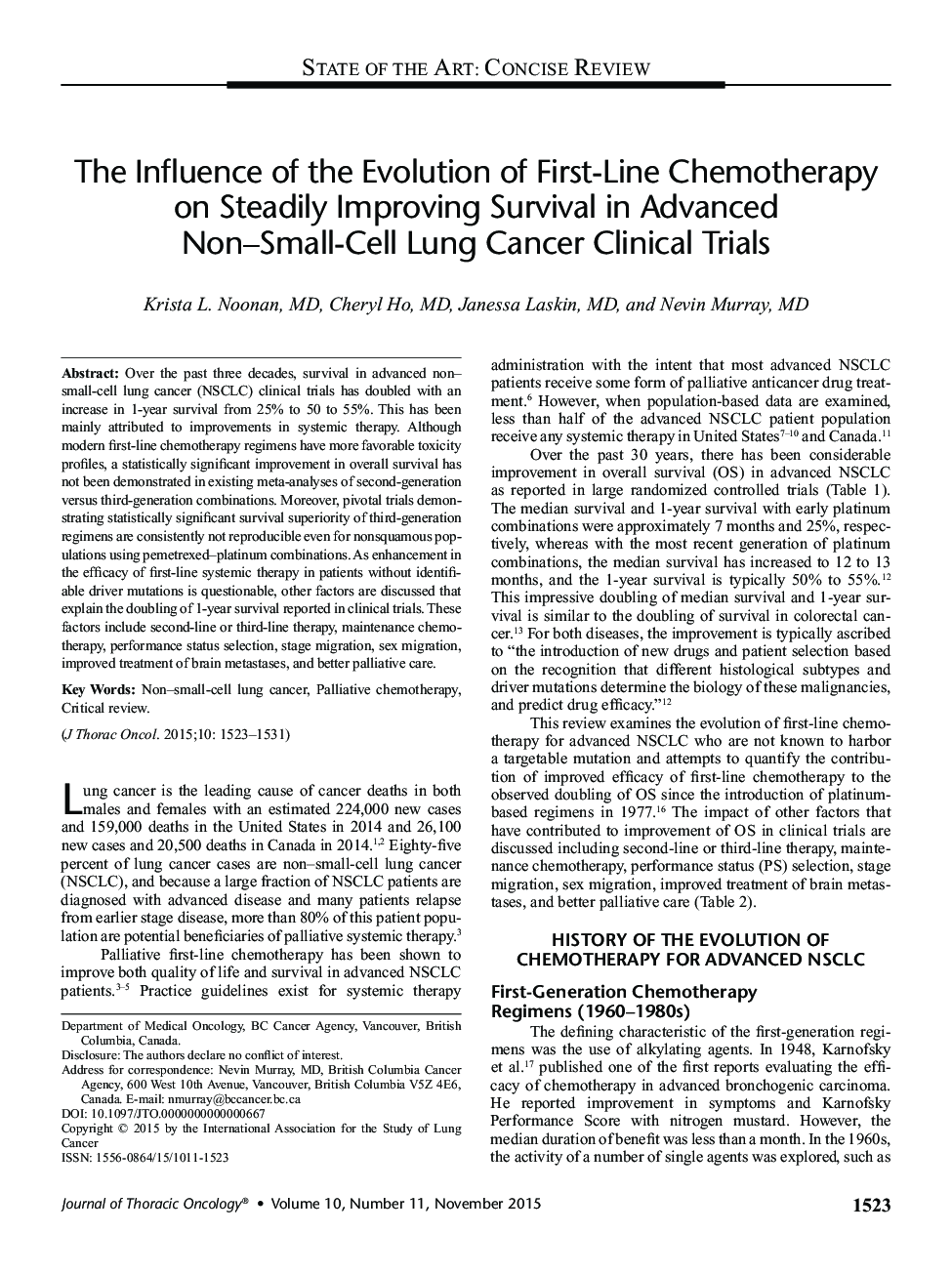| Article ID | Journal | Published Year | Pages | File Type |
|---|---|---|---|---|
| 3989523 | Journal of Thoracic Oncology | 2015 | 9 Pages |
Abstract
Over the past three decades, survival in advanced non-small-cell lung cancer (NSCLC) clinical trials has doubled with an increase in 1-year survival from 25% to 50 to 55%. This has been mainly attributed to improvements in systemic therapy. Although modern first-line chemotherapy regimens have more favorable toxicity profiles, a statistically significant improvement in overall survival has not been demonstrated in existing meta-analyses of second-generation versus third-generation combinations. Moreover, pivotal trials demonstrating statistically significant survival superiority of third-generation regimens are consistently not reproducible even for nonsquamous populations using pemetrexed-platinum combinations. As enhancement in the efficacy of first-line systemic therapy in patients without identifiable driver mutations is questionable, other factors are discussed that explain the doubling of 1-year survival reported in clinical trials. These factors include second-line or third-line therapy, maintenance chemotherapy, performance status selection, stage migration, sex migration, improved treatment of brain metastases, and better palliative care.
Related Topics
Health Sciences
Medicine and Dentistry
Oncology
Authors
Krista L. MD, Cheryl MD, Janessa MD, Nevin MD,
